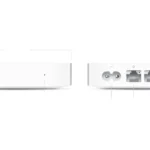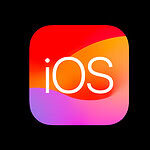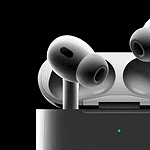Screen mirroring is a valuable feature on your iPhone that lets you display your phone’s screen on another device, like an Apple TV or a compatible smart TV. With screen mirroring, anything you do on your iPhone, from viewing photos to watching videos, can be shared on a larger screen for better viewing. The process relies on the built-in AirPlay feature, ensuring that no extra apps or complicated setups are needed as long as both devices are on the same Wi-Fi network.
Setting up iPhone screen mirroring is straightforward. First, one must ensure that both the iPhone and the receiving device are connected to the same Wi-Fi network. Once confirmed, it’s a simple matter of accessing the Control Center on your iPhone and tapping the Screen Mirroring button to select the device you want to mirror to. When properly set up, your iPhone’s display will appear on the selected device, allowing for a larger visual experience.
Seamless Streaming: Your iPhone on the Big Screen
What is Screen Mirroring?
Screen mirroring lets you show your iPhone’s screen on another display, like a TV or computer. It’s great for sharing photos, videos, presentations, or even playing games on a larger screen.
How to Screen Mirror Using AirPlay
AirPlay is Apple’s built-in technology for screen mirroring. It’s easy to use and works wirelessly.
- Connect: Ensure your iPhone and the device you want to mirror to (Apple TV, AirPlay-compatible smart TV, or Mac) are on the same Wi-Fi network.
- Open Control Center:
- On iPhone X or later: Swipe down from the top-right corner.
- On older iPhones: Swipe up from the bottom.
- Tap Screen Mirroring: The icon looks like two overlapping rectangles.
- Select your device: Choose the device you want to mirror your iPhone screen to from the list.
Troubleshooting AirPlay Issues
If you’re having trouble with AirPlay, try these steps:
- Check your Wi-Fi: Make sure both devices are connected to the same network and that the connection is strong.
- Restart: Restart your iPhone and the device you’re trying to mirror to.
- Update software: Ensure both devices are running the latest software.
- Check compatibility: Confirm that the device you’re mirroring to supports AirPlay.
Alternative Mirroring Methods
If you don’t have an AirPlay-compatible device, you can use other methods:
- Lightning to HDMI adapter: This lets you connect your iPhone directly to a TV using an HDMI cable.
- Third-party apps: Apps like Reflector or AirServer allow you to mirror your iPhone to a computer.
Tips for Screen Mirroring
- Adjust settings: For best results, adjust your TV’s display settings to match your iPhone’s screen resolution.
- Use Do Not Disturb: This prevents notifications from interrupting your mirrored content.
- Conserve battery: Screen mirroring can drain your iPhone’s battery, so keep a charger handy.
Key Takeaways
- Screen mirroring on an iPhone allows display sharing on larger screens using AirPlay.
- Connecting to the same Wi-Fi ensures devices can communicate for screen mirroring.
- Troubleshooting includes checking connections and settings if mirroring is not working.
Setting Up iPhone Screen Mirroring
To mirror your iPhone’s screen to another device, make sure both devices are connected to the same Wi-Fi network and utilize AirPlay or a third-party app. Follow these easy steps to enjoy your iPhone’s content on a larger screen.
Connecting to Wi-Fi Network
First, connect your iPhone to a Wi-Fi network. Open the Settings app, tap Wi-Fi, and choose a network. Enter the password if prompted. A checkmark will appear next to the network name indicating a successful connection.
Using AirPlay for Screen Mirroring
For devices compatible with AirPlay 2, such as an Apple TV or certain smart TVs, access the Control Center on your iPhone. For iPhone models with Face ID, swipe down from the upper-right corner. For models with a Home button, swipe up from the bottom edge. Tap the Screen Mirroring icon and select your TV from the list. If a code appears on your TV screen, enter it on your iPhone to complete the connection.
Other Devices and Apps for Mirroring
If you have a device like a Chromecast, Roku, or Windows PC, third-party apps can enable screen mirroring. Download an app such as Reflector to your iPhone. Open the app and follow its instructions for connecting to your mirroring device. Make sure both your iPhone and the receiving device are connected to the same Wi-Fi network for a hassle-free experience.
Troubleshooting Common Screen Mirroring Issues
In this section, you will learn how to address common challenges of screen mirroring with your iPhone, whether it involves checking connectivity, solving audio-video issues, or getting your devices to communicate properly.
Connectivity and Compatibility Checks
First, ensure both your iPhone and the receiving device, such as an Apple TV, smart TV, or Mac, are compatible and connected to the same Wi-Fi network. Forgetting this simple step could prevent your iPhone from communicating properly. If issues persist, resetting the network settings on your iPhone can clear any glitches. To reset, go to Settings > General > Reset > Reset Network Settings and try to mirror your screen again.
Resolving Audio and Video Issues
Sometimes, the video might stream but the audio may not, or vice versa. Check if your device’s volume is not muted and that you haven’t overlooked any audio settings on your TV or receiver. In case of intermittent video problems, a restart of both the iPhone and the AirPlay receiver, such as your TV or Mac, often helps resolve the issue.
Assistance with Specific Devices or Services
Finally, if you’re using a specific device or service, the troubleshooting steps may vary. For example, when using a Windows PC, verify if the app you are using to mirror screen supports AirPlay or requires a passcode. Similarly, with Apple TV or AirPlay-compatible smart TVs, check for the latest system updates and ensure that AirPlay is enabled in the settings. If you’ve set up your device with the Home app, make sure the Home Settings don’t restrict AirPlay under Speakers & TV.







